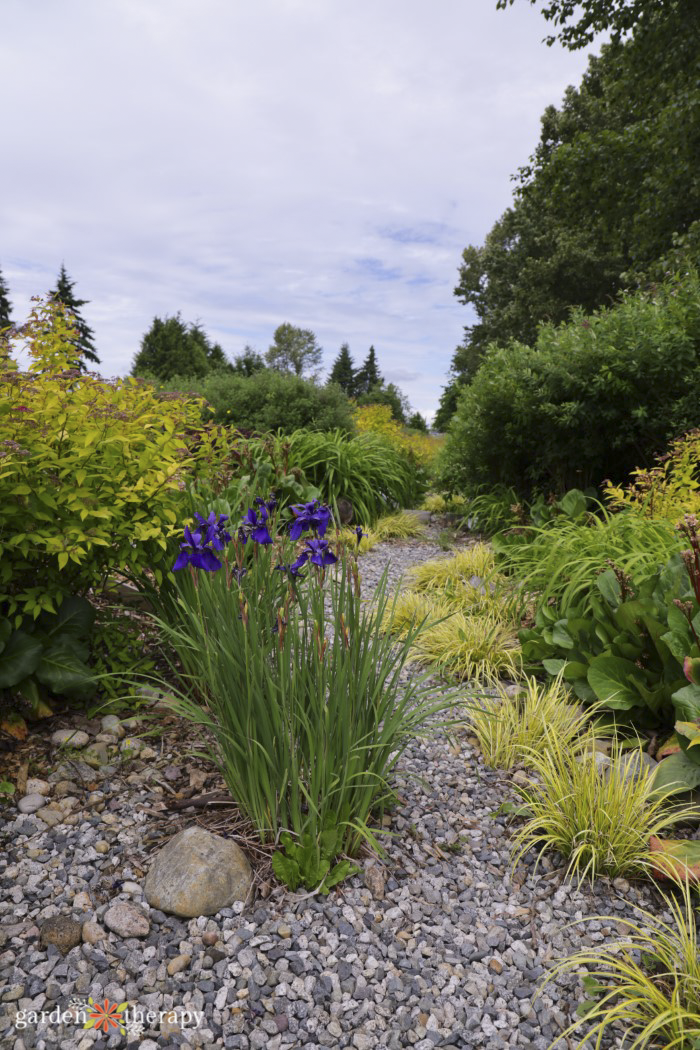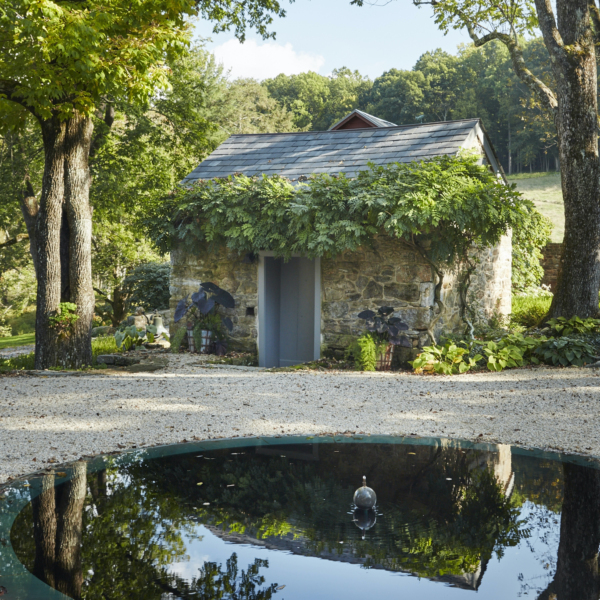With unpredictable weather becoming more and more frequent, having effective water conservation and filtering systems in your garden is more important than ever. If you have downspouts in your garden that direct to the street or a drain, let me introduce you to rain gardens! This garden project allows you to disconnect downspouts from sewers and instead let the rainwater rightfully return to the earth.
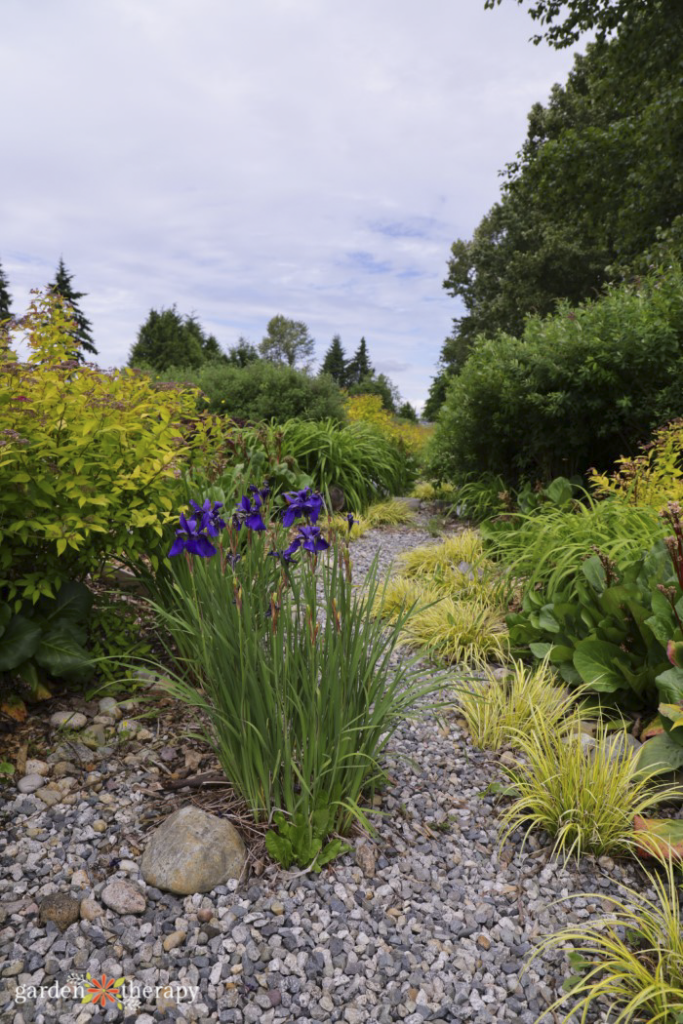
While a rain garden sounds fancy, it’s really a low-maintenance system used to filter and release stormwater runoff. This keeps water local to the soil and creeks, just how nature intended it.
I live in a rainy climate where a lot of wonderful work is being done to study, build, and educate the public on rain gardens and why they’re so important. It takes some time for these rain gardens to fill in, but boy are they beautiful when they do!
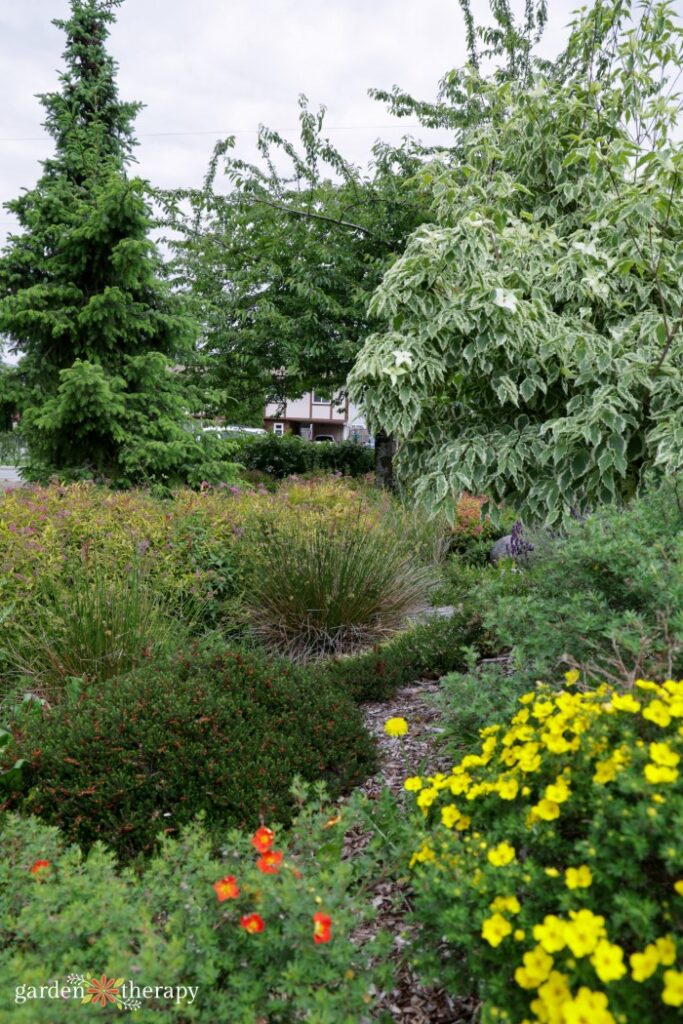
To check out some established rain gardens, I went on a walking tour with Deborah Jones from Cougar Creek Streamkeepers. They’re a wonderful group of volunteers dedicated to helping to restore and maintain the health of Cougar Creek, a salmon stream here in BC.
One of the major things they do is create rain gardens to help reduce stormwater drainage. You can check out the rain gardens I visited on this map (stops 13, 14, 15, 16, and 17). The McCloskey Elementary School especially had a beautiful one. You can see the school’s rain garden in the photos throughout this post, among the other stops.
This post will cover…

By the way, this is one of many projects featured in my latest book, The Regenerative Garden. Besides sustainable water drainage systems and gardens, I also cover plenty more ways you can create a natural and self-sustaining garden. Be sure to check it out if you’re ready to take your garden the extra mile towards sustainability.
What is a Rain Garden?
A rain garden is any type of landscape that takes, absorbs, and filters rainwater runoff. Usually, this runoff is directed from man-made surfaces such as pavement or roofs.
Without human interference, all rainwater would naturally soak into the ground. But the more buildings, streets, and other urban developments we create, the more land we cover. This means less and less ground area where rain can soak into the soil.
Our solution was to create water drainage systems like eavestroughs, storm drains, and ditches. This is known as urban runoff. These drainage systems direct water back into streams and rivers, but they become incredibly polluted. They carry litter, oil, fertilizer, gas, pesticides, and more.
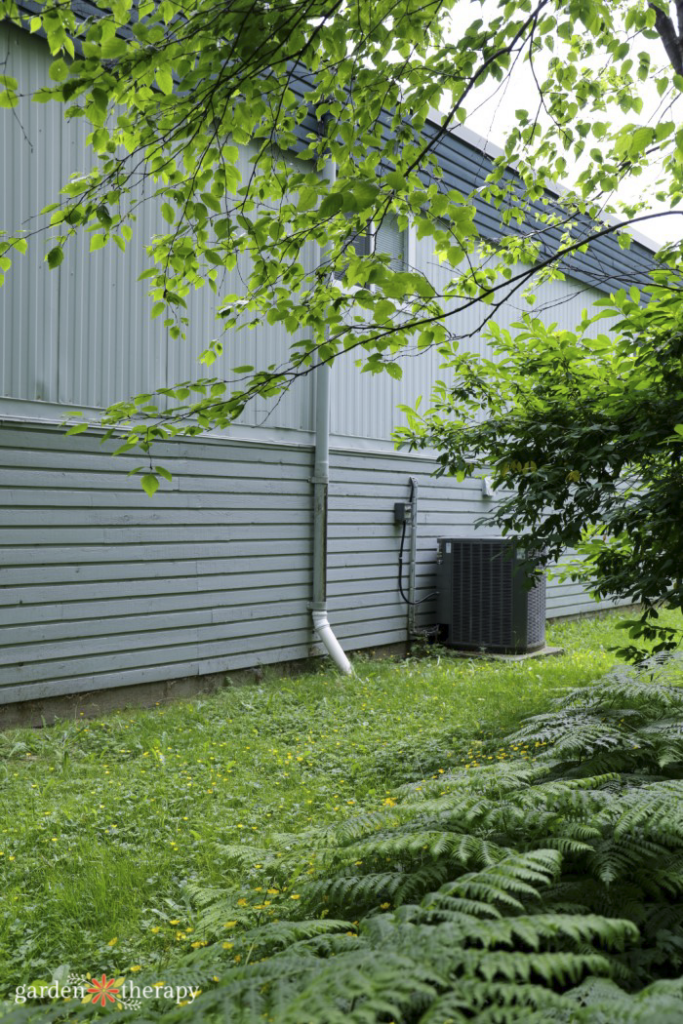
A rain garden can help retain water where it naturally belongs and filter all that urban runoff. It will remove the pollutants that would have otherwise gone down the drain.
Beyond their functional duty, they also can be beautiful gardens that become a habitat for local wildlife and even provide some much-needed shade during the warm season.

How Does a Rain Garden Work?
Home gutters sometimes direct into sewer systems, which route stormwater through the same treatment system as toilets, showers, and sinks. Not only is this treatment unnecessary, but it can also cause overflows of the sewer system that redirects into the nearest river, lake, or ocean. This leaves local soils and waterways devoid of the rainfall they need to stay healthy.
The basin of a rain garden is filled with plants that love moisture and can act as biofilters to purify the water. The upper swales have drought-tolerant plants that love to grow deep roots and access the available groundwater when they can.
The rain garden design can be as simple as attaching a gravel-filled trough to a downspout and building a garden bed around it to designing more elaborate rain gardens that become a haven for bird and insect species.
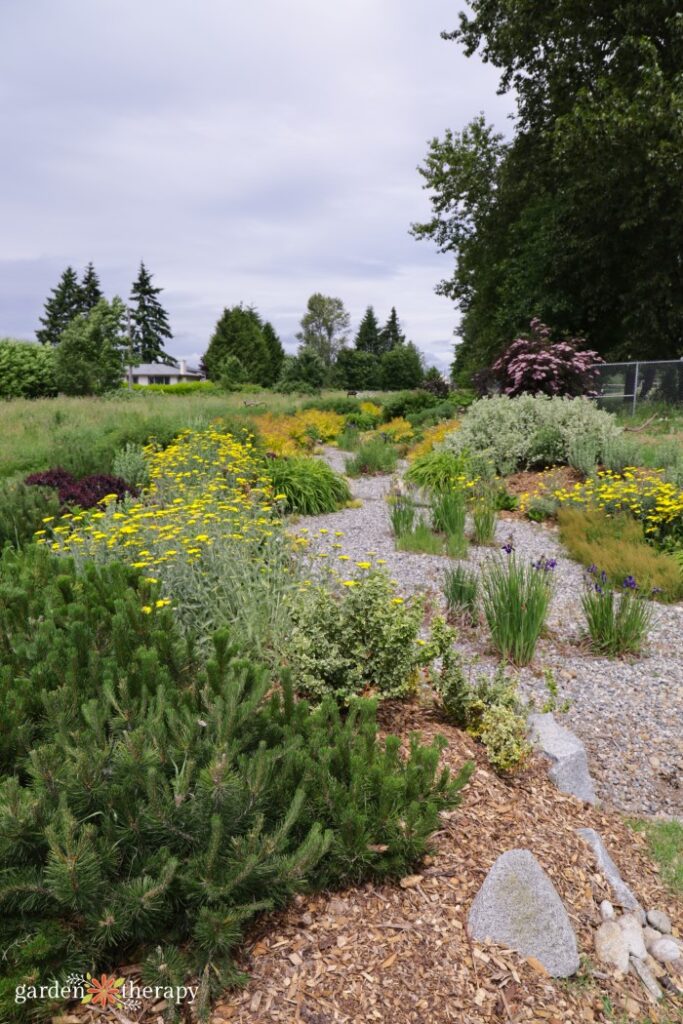
Creating a Unique Rain Garden Design
Every rain garden will look different but there are some rules you will want to follow to get a functional design!
The garden is built as a swale: a recessed center about 4-8 inches with berms around the perimeter to hold water in. The center planting area should be level to prevent pooling. The garden is generally twice as wide as it is long, with the widest part at the lowest point of the slope.
Locate an area 5 to 15 feet away from buildings. At a minimum, the overflow drain should end 5 feet from structures without basements and 10 feet from structures with a basement height of 5 feet; add 2 additional feet for every foot deeper the basement is. Don’t locate a rain garden over underground utilities or large tree roots.

The rain garden’s location should be slowed away from buildings to direct overflow out through spillways to other gardens rather than running back toward structures; however, the garden itself should have no more than a 5% grade overall (1-foot drop in 20 feet).
In rainy climates, the bottom inside of the garden should be 15% of the square footage of the runoff source. So, a 500-square foot root requires a 75 square foot garden base (500×0.15=75).
These measurements were provided by Seattle Public Utilities and King Country Wastewater Treatment Division’s RainWise Program.
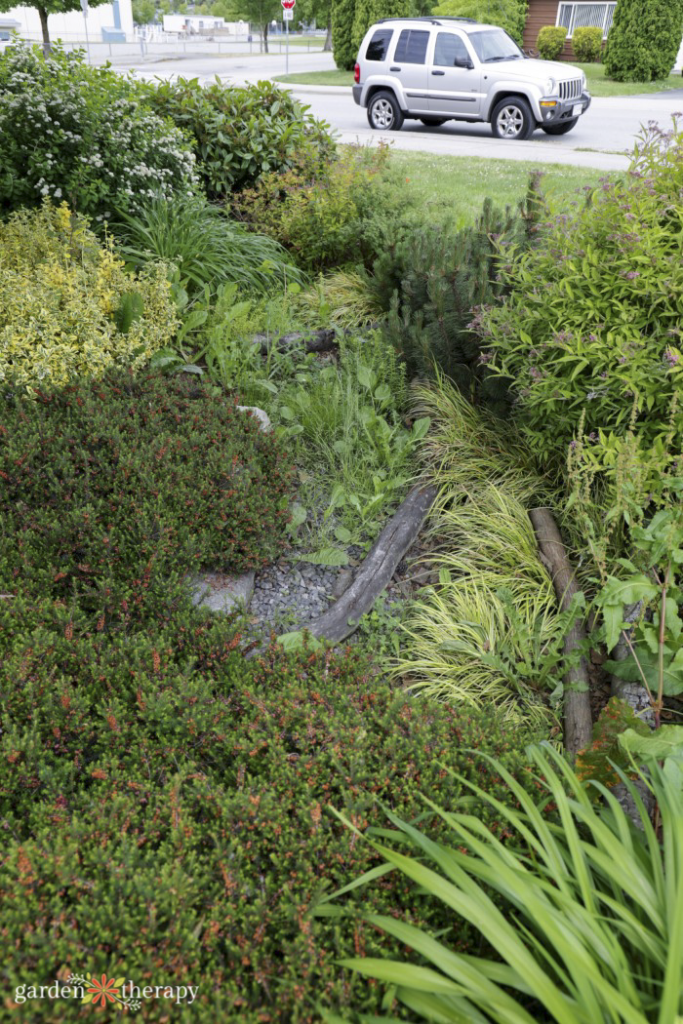
How to Build a Rain Garden
- Determine the garden’s location and extend the downspout to the highest point of the garden. Choose a location that can handle plenty of water saturation, away from septic systems, and away from plants, shrubs, or trees that don’t like their roots to stay wet.
- Use a garden hose or sprinkle flour to outline the garden’s shape.
- Dig the base 24 inches deep and use the soil to berm up the sides.
- Fill the base with 12 inches of a rain garden soil mix (one-third compost and two-thirds garden soil). This leaves 12 inches of ponding depth (the space from the top of the base soil to ground level where water can collect during rainy periods).
- At the lowest point of the garden edge, create an overflow area packed with rocks. This allows the overflow to be released without eroding the garden. The overflow should be directed to a street drain.
- Plant the rain garden design with water-loving plants. Add optional spillways to other garden beds that the overflow can irrigate.

Rain Garden Plants
Choose the right plants for your garden’s conditions. Suggested plants can be native plants or cultivated garden favourites that perform well in your unique microclimate. The best place to find the right plants for your garden is at your local garden nursery, which will carry both native and cultivated plants.
Plant the garden plants, mulch with 2 inches of compost and water well. Water the plants regularly to establish them in the first few years. Add more compost as mulch annually.
Often plants will move into the right position in the garden, like these drought-tolerant plants below that have replanted themselves to the basin of this area.
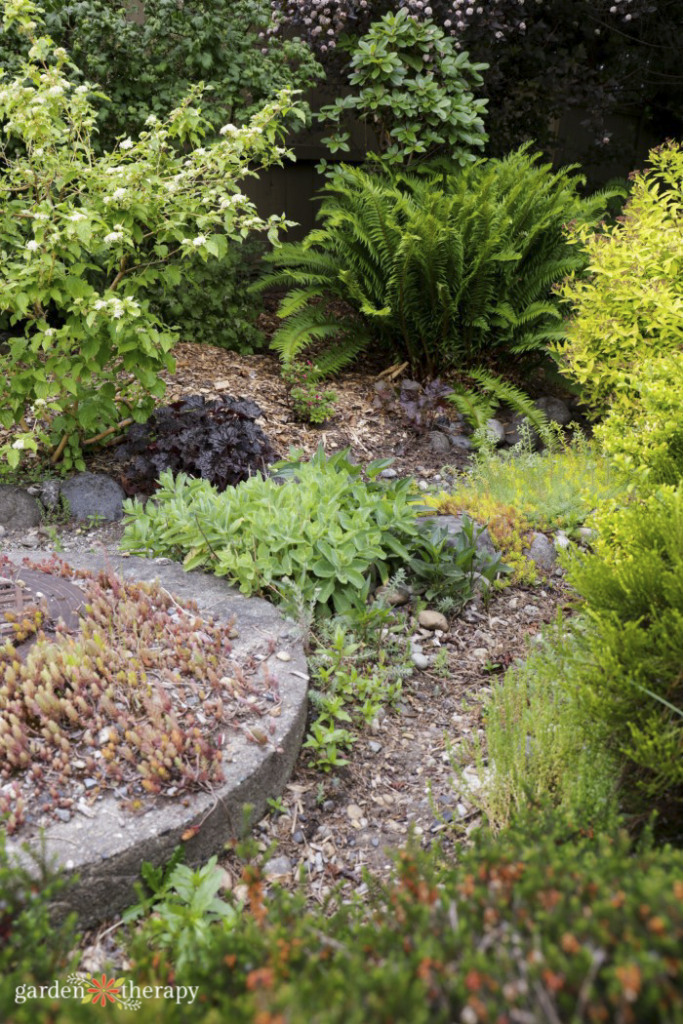
FAQ About Rain Gardens
Where is the best place to put a rain garden?
Look for a high to low spot, where gravity can help with drainage. You want an area that can handle lots of water saturation.
Keep your rain garden away from large trees where their roots can take over, right next to buildings, and from septic systems. Also, consider the soil, as clay soil will require a larger rain garden to avoid pooling.
What is the best shape for a rain garden?
The best shape depends on your space, as you want to work with gravity rather than against it. Most rain gardens are designed to come from a downspout and move downward. People also design them alongside a driveway or ditch for a longer, more narrow design shape.
You want to maximize infiltration. Guide the water to meander or pool through the garden so that it filters before draining to an overflow drain.
Also ensure you’ve called your local authority and mapped out any utility lines on the property when designing your shape.
What is the best mulch for a rain garden?
Arborist woodchips are great for improving water absorption, as they prevent the soil from compacting. Regularly adding mulch will conserve the moisture in the ground and improve water retention and soil aeration.
Can I add rock to my rain garden?
Rocks won’t absorb any water, so you want to use them sparingly and as a final touch. Once you’ve made sure the soil is spongy and ready to absorb water, you can add rock for aesthetic purposes or to protect the soil from erosion in areas where there’s lots of water flow. Keep it a thin layer and don’t overdo it!
As you can see, creating a rain garden is fairly simple and can provide lasting benefits for years to come. If you have any questions, please leave them in the comments below!
